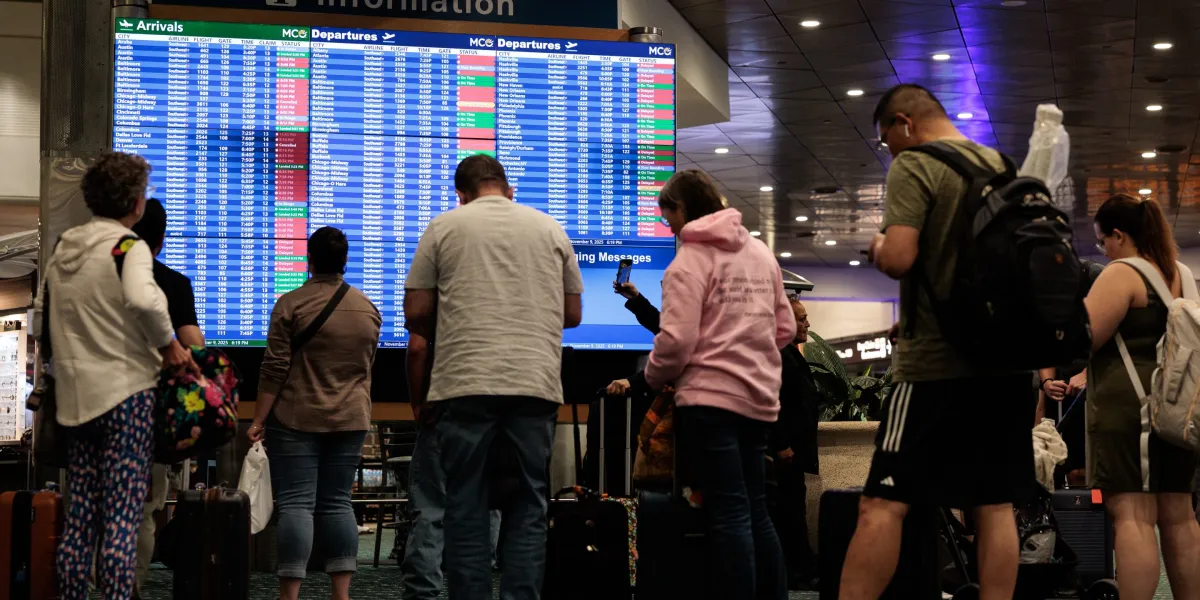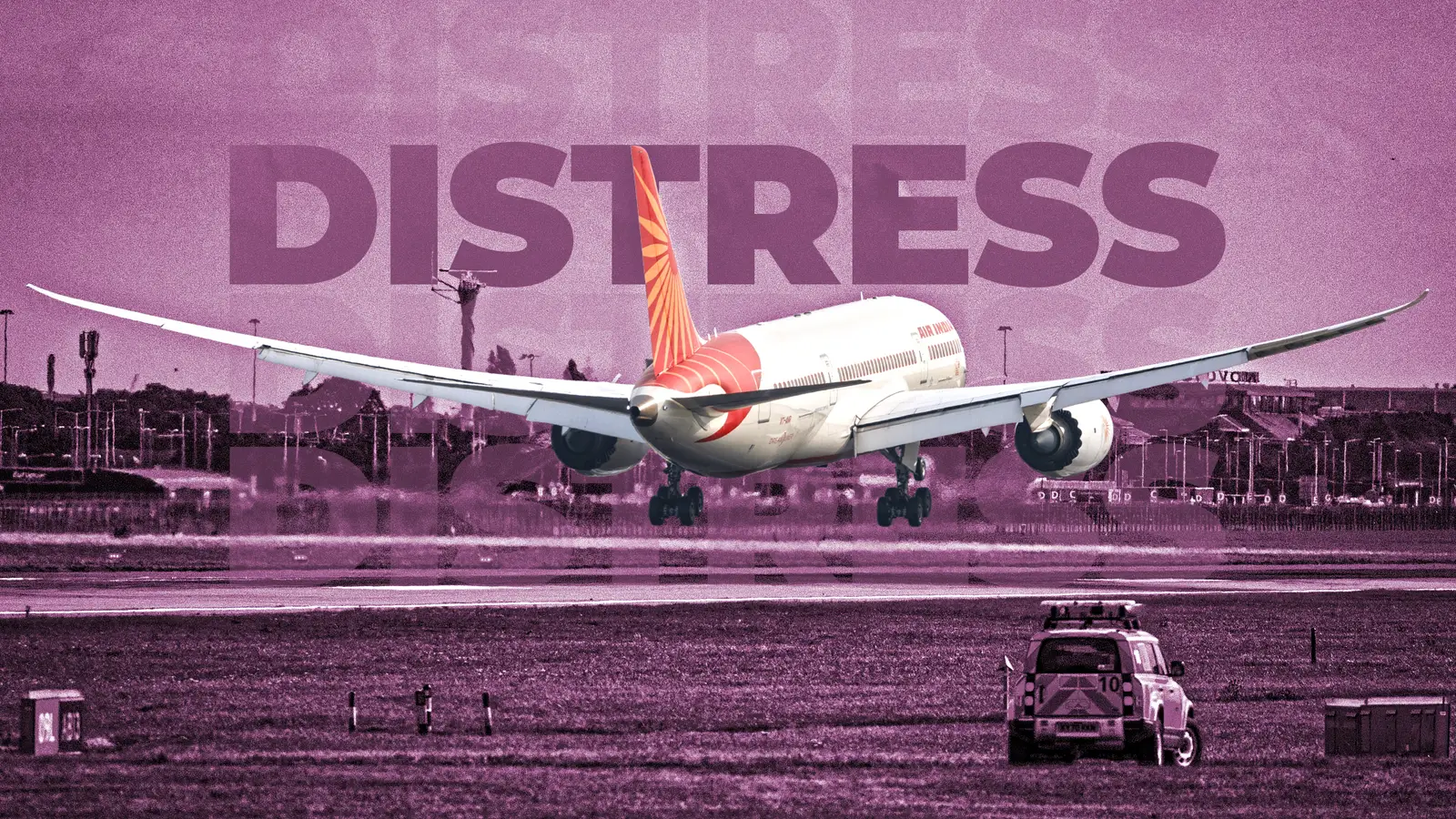Copyright Fortune

But for more than a month, airports have been riddled with chaos as federal workers, including air traffic controllers and TSA agents, have gone without pay due to the government shutdown. Flight cancellations, delays, and staffing shortages caused massive delays at major airports, with TSA lines stretching for hours. Then last week, the Federal Aviation Administration announced it would cut the number of flights in “high traffic” parts of the U.S. as airports suffer from extreme staffing shortages. Transportation Secretary Sean Duffy said Wednesday that capacity would be reduced by 10% at 40 airports. “This is about where’s the pressure and how do we alleviate the pressure,” he said. But data from aviation analytics company Cirium, shared with Fortune, shows that some of the nation’s biggest airports have had flight cancellation rates exceeding 20% since Friday. For example, on Monday, Chicago Midway had 23.5% of its flights canceled, and on Nov. 9, Newark had a 26.7% cancellation rate. Meanwhile, New York LaGuardia had a 19.4% cancellation rate on Nov. 9, and Atlanta had an 18.9% cancellation rate on Nov. 8. FlightAware data shows the total number of flight cancellations within, into, or out of the U.S. since Saturday: Saturday, Nov. 8: 1,566 Sunday, Nov. 9: 2,954 Monday, Nov. 10: 2,422 Tuesday, Nov. 11: 1,199 Cancellation percentages vary by airport and airline; airlines are expected to cancel 6% of their flights at 40 high-traffic airports on Tuesday. Plus, 800 flights for Wednesday, Nov. 12, have already been cancelled. These cancellations have been exceedingly frustrating for customers, like Todd Walker, who told The Economic Times he missed his mother’s 80th birthday when his flight was cancelled this weekend. “All of this has real negative consequences for millions of Americans, and it’s 100% unnecessary and avoidable,” he said. Here is a chart showing the current cancellation rate at airports with the highest volume of flights on Tuesday, according to data from Cirium: Why so many flights are getting canceled Before the government shutdown even began on Oct. 1, there was already a major shortage of air traffic controllers. This problem largely came to light after a major incident in January, when there was a deadly midair collision near Reagan National Airport between an American Airlines passenger jet and an Army Black Hawk helicopter, killing 67 people. An FAA internal safety report revealed severe staffing shortages at the air traffic control tower: Just one controller was handling both the helicopter and the airplane communications simultaneously that night. This incident illustrated just how understaffed air traffic control has been, and the FAA is still short about 3,000 controllers. “Currently, half of our Core 30 facilities are experiencing staffing shortages, and nearly 80% of air traffic controllers are absent at New York–area facilities,” according to an X post by the FAA on Oct. 31. “The shutdown must end so that these controllers receive the pay they’ve earned and travelers can avoid further disruptions and delays.” Meanwhile, due to the government shutdown, air traffic controllers and TSA agents have gone without pay for more than a month. That’s led to workers simply not showing up for shifts, although they’re not allowed to strike as federal workers officially. On Monday, President Donald Trump even threatened air traffic control workers who didn’t show up for work, saying their pay would be “docked.” “All Air Traffic Controllers must get back to work, NOW!!! Anyone who doesn’t will be substantially ‘docked,'” Trump wrote on social media. “REPORT TO WORK IMMEDIATELY.” Will upcoming Thanksgiving travel be affected? This has been the worst time of year for a government shutdown (and subsequent flight delays and cancellations), with one of the busiest travel seasons just around the corner. Although the House is expected to vote on a funding bill this week, the ripple effects of the month-long government shutdown will continue to hurt airports; the travel industry has already lost a whopping $4 billion from the government shutdown. “Airlines’ reduced flight schedules cannot immediately bounce back to full capacity right after the government reopens,” according to a statement made Monday by trade organization Airlines for America. “It will take time, and there will be residual effects for days.” Mike Arnot, an airline industry commentator, told Fortune he predicts it will take just two or three days to return to normalcy after the government shutdown ends, since airlines are practiced at handling large numbers of cancellations and delays throughout the year due to weather or other events. “Just as there are teams that have been focused on reducing their schedules from an operational perspective during the shutdown, those same folks will be working to ‘spool up the engines,’ so to speak,” he said. “Aircraft will have been parked since Thursday night, and crews are not dispersed across the country—as would be the case in a cascading weather disruption.” However, since the funding bill still hasn’t been reconciled, the clock is ticking—only bringing us closer to one of the busiest air travel seasons of the year. “With the Thanksgiving travel period beginning next week and the busy shipping season around the corner, the time to act is now to help mitigate any further impacts to Americans,” according to Airlines for America.



